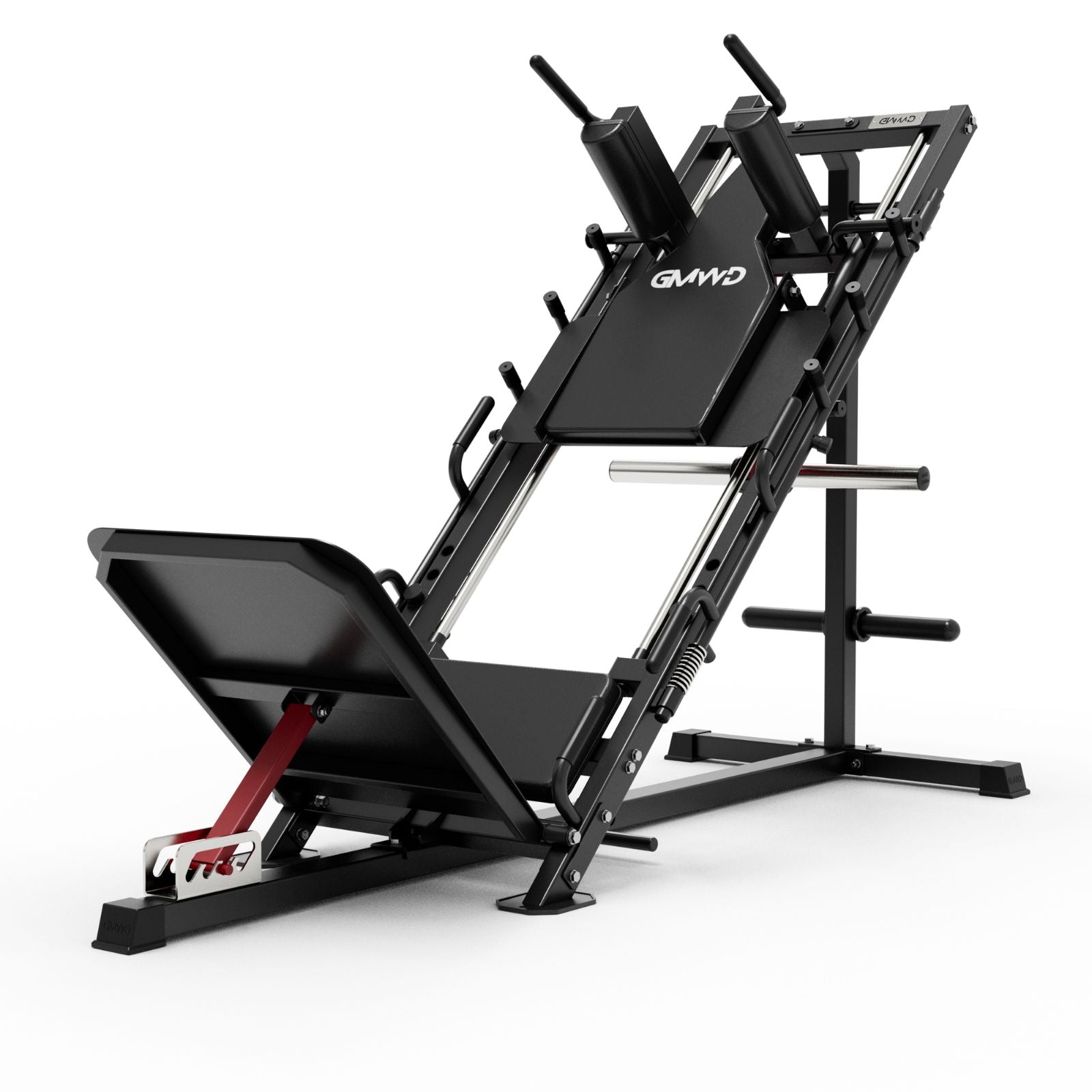The hack squat is one of the most effective leg exercises for building strength and muscle mass in the lower body. If you’ve ever wondered what exactly the hack squat targets, you’re not alone. In this article, we’ll dive deep into the muscles engaged during this exercise and explain why it’s an essential move for anyone looking to improve their leg strength and physique.
What is the Hack Squat?
The hack squat is a variation of the traditional squat, performed on a specialized machine designed to support your back and body while you squat. This machine allows you to focus on the movement of your legs, minimizing the involvement of your core and upper body, unlike free-weight squats. The hack squat can be performed with a wide or narrow stance to target different muscle groups within your legs.
Primary Muscles Targeted by the Hack Squat
While the hack squat is primarily known for building the quadriceps, it works a number of other muscles in your lower body as well. Let's take a closer look at the key muscles targeted during the hack squat:
1. Quadriceps (Front of the Thighs)
The quadriceps are the primary muscle group worked during the hack squat. These four muscles (the vastus lateralis, vastus medialis, vastus intermedius, and rectus femoris) are responsible for extending the knee and are heavily engaged during the pushing phase of the movement. The hack squat’s fixed motion and upright position place more emphasis on the quadriceps than other leg exercises, making it a fantastic option for anyone looking to increase their quad size and definition.
2. Glutes (Buttocks)
While the quadriceps take the lead, the glutes are also activated during the hack squat. As you descend and push back up, your glutes work to extend your hips and stabilize your pelvis. A deeper squat, where your thighs reach parallel or below parallel, will engage your glutes more intensely, contributing to stronger and more defined buttocks.
3. Hamstrings (Back of the Thighs)
The hamstrings play a secondary role during the hack squat. As you lower your body and push through the squat, your hamstrings help stabilize the movement and assist in knee flexion. While the hack squat isn’t the primary exercise for hamstrings, they do get activated to some degree, especially if you maintain a deeper squat position.
4. Calves (Lower Leg)
The calves, particularly the soleus and gastrocnemius muscles, are lightly engaged during the hack squat. While the calves are not the primary muscle group worked, they play a supporting role in stabilizing the lower leg during the movement. The calves help in maintaining balance and controlling the lowering phase of the squat.
Secondary Muscles Engaged in the Hack Squat
Aside from the main muscles listed above, the hack squat also engages several stabilizer muscles:
- Hip Flexors: These muscles help in the upward movement as you extend your hips.
- Core Muscles: The core, including the abdominals and lower back muscles, plays a supportive role to help maintain proper posture and control during the squat.
Benefits of the Hack Squat
Now that we know which muscles the hack squat targets, let's discuss the benefits of incorporating this exercise into your routine.
1. Quad Development
If you want to build larger, more defined quads, the hack squat is one of the best exercises to include in your leg workout. The machine’s setup places the knees in a forward motion, isolating the quads and allowing for deeper knee flexion.
2. Glute Activation
Many lifters find that the hack squat provides a superior range of motion for glute development, especially when they squat deeply. This can help develop a rounder and more sculpted rear.
3. Safer Squatting Form
Because the hack squat machine offers a stable, controlled environment, it can be easier on your lower back compared to free-weight squats. The fixed movement path also reduces the risk of injury, making it an excellent option for those who are new to squatting or recovering from injury.
4. Increased Strength
The hack squat is a great compound exercise that targets multiple muscles, allowing you to lift heavier weights than you might with bodyweight squats. This makes it ideal for building overall leg strength, which can translate to improvements in other exercises such as deadlifts and lunges.
5. Versatility
You can modify the stance on the hack squat machine to target different areas of your legs. A wider stance shifts more emphasis to the glutes and inner thighs, while a narrower stance places more focus on the quadriceps.
Conclusion: Why Should You Add the Hack Squat to Your Routine?
The hack squat is an excellent machine-based exercise that targets several key muscle groups in the lower body, with an emphasis on the quadriceps. By incorporating the hack squat into your leg day routine, you can increase quad strength, build glute and hamstring muscles, and improve overall lower body strength. Whether you're a beginner or an experienced lifter, the hack squat is an essential movement for anyone looking to take their leg development to the next level.
So, if you haven’t already, give the hack squat a try—and watch your legs grow stronger and more defined with every rep!










































Leave a comment
This site is protected by hCaptcha and the hCaptcha Privacy Policy and Terms of Service apply.